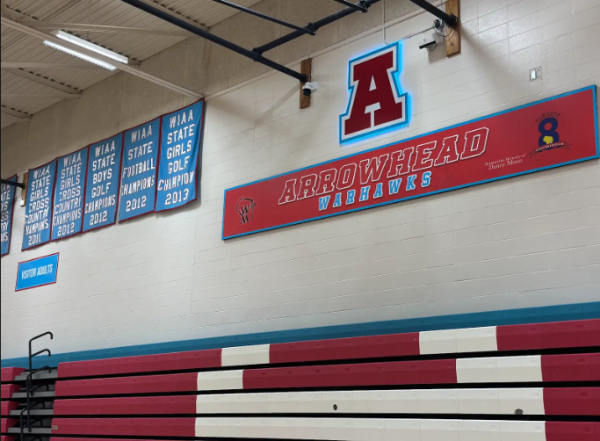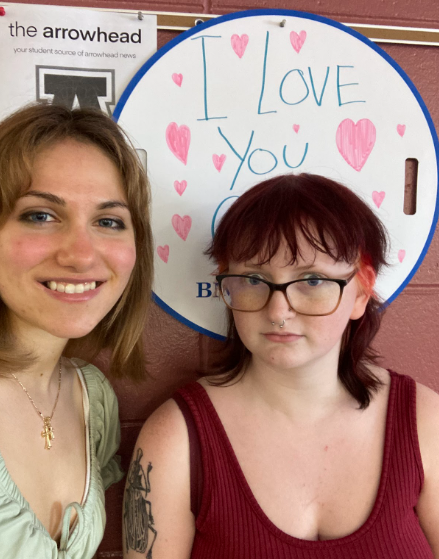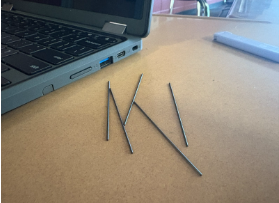New Arrowhead Society Collaborates to Bring History to a New Endeavor
Members of Rho Kappa, one of Arrowhead’s newest organizations, have recently collaborated with Arrowhead’s drama department in attempts to fuse theater and history.
After being inducted into Rho Kappa, the Social Studies National Honors Society, members have one main requirement to fill: creating an educational, social studies centered, public display. Every member must construct one of these projects and many have chosen “A Day in History” where they publicised important or historically significant events during a specific date. This is the reason behind the smattering of posters in the halls and announcements before and or after school.
Most recently a group of members banded together to help the drama department, putting on the play “Hiding in the Open,” make the display windows. The performance was the second production of the spring for the department and a self proclaimed departure from their normal material. The plot of “Hiding in the Open” centers around two Jewish sisters who fled to Germany from Poland in an attempt to clandestinely wait out the war under the guise of Christian Poles.
Shannon Johnson who is both a Rho Kappa member and involved in the production came to Mr. Reichle, one of the heads of the new organization, when the opportunity of the collaboration presented itself. “I knew constructing the window displays would involve auxiliary research but,” Johnson admitted, “I also realized I wouldn’t be content unless I helped design them.” The six members whom Mr. Reichle gathered decided to meld the production’s information with a more extensive look into Nazi Germany.
“The main struggle,” one member admitted, “was to find material suitable for the case. We wanted to do the topic justice but at the same time the information and images tend to be jarring. The problem is anyone can walk by the display case and we wanted to be respectful to those who don’t necessarily wish or are too young to be exposed some of the material.”
The six colors, symbols of the different ethnic groups persecuted, hangs as the backdrop in the case along with explanations of the colors. Also, a map of Germany hangs with the locations of the girls’ journey to help the audience geographically picture the setting.
However, the members were still missing auxiliary material and with the holocaust posters on backorder, the project was at an impasse. The dilemma was resolved when one member took it upon herself to visit the National Holocaust Museum in Washington DC.
“It was kind of strange going into such a somber place and having your sole intent being purchasing items, I had to keep reminding myself that I had a purpose and it was for a good cause,” she concieded. The visit wasn’t fruitless. She came back with the badge poster, some authentic newspapers and a handmade dreidel which are all on display. But perhaps the weirdest item was the postcards. “Once you get past the fact that the images were meant to be postcards sent to people,” she said, “they made fantastic mini-posters for the display.”
The collaboration worked relatively seamlessly and all parties involved benefited. The display was up for a week prior to the play to help promote the production and will remain until the end of the year.





